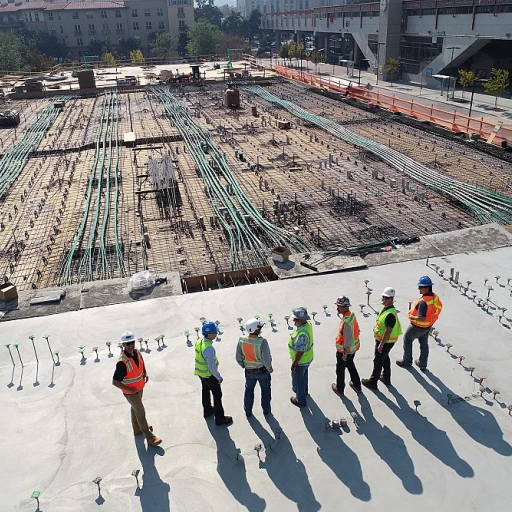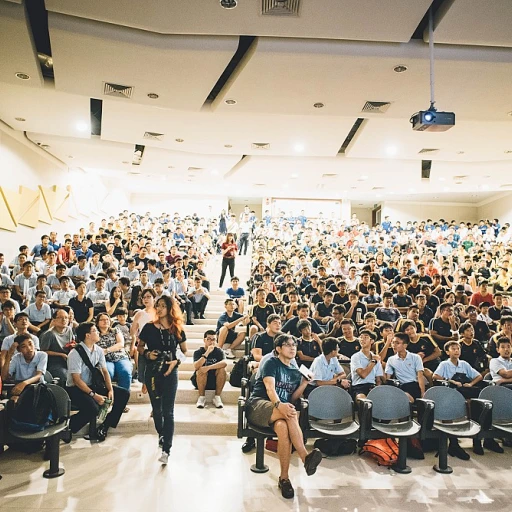
Understanding AI's Role in Workforce Allocation
Integrating AI Technologies in Workforce Allocation
Artificial intelligence has increasingly become a transformative force in various domains, including human resource management. The integration of AI in workforce allocation presents opportunities to create more efficient and effective human resource strategies within organizations. This potential is seen in multiple areas ranging from recruitment to optimizing employee placements. For example, AI-driven systems can analyze vast amounts of data, helping organizations make informed staffing decisions. These data-driven insights are valuable for understanding current human capital trends, predicting future workforce needs, and optimizing resource allocation. Click here for a more in-depth look at how AI leverages data-driven insights for better decision-making. Incorporating AI can dramatically streamline the recruitment process for staffing agencies and internal HR departments alike. By evaluating large sets of data points, AI can discern patterns that indicate successful job placements, which helps managers find suitable candidates for specific roles efficiently. Moreover, businesses are exploring different talent acquisition strategies to curate a more agile workforce. Full-time employment is no longer the only solution as temp hires or project-based personnel services are becoming increasingly significant in certain industries. Organizations also employ AI to enhance executive search processes by creating detailed profiles of potential candidates. By analyzing talent and skills data, AI highlights suitable individuals for senior roles, thus saving time for human resource and talent management teams. The use of AI in workforce allocation brings promising advancements but involves considerations of data privacy and ethical use. As technologies evolve, companies are tasked with ensuring both efficiency and integrity in their HR practices. The following sections will delve into how AI supports human resources further—from recruitment to overcoming implementation challenges.AI-Driven Recruitment: Finding the Right Fit
Streamlining Talent Acquisition
The recruitment process can be an overwhelming task for any human resources department, requiring a delicate balance between finding the right candidates and managing time efficiently. AI-driven recruitment offers a powerful solution to streamline staffing processes across organizations and staffing agencies. It leverages data analysis and machine learning to find human talent faster and with a greater precision than traditional recruitment methods.
AI tools help hiring managers sifting through large volumes of applications, identifying the most qualified candidates for specific roles. This approach not only reduces the time and resources staffing agencies dedicate to recruitment but also improves the overall hire quality. By analyzing a candidate's professional background, skills, and even social media activities, AI-based systems can predict job performance and cultural fit, leading to successful long-term hires.
Improving Candidate Matching
Beyond basic filtering, AI enables better candidate-job matching through continuous learning algorithms. It considers numerous data points, including nuanced attributes like soft skills, allowing for a more refined selection process. As these systems learn from past recruitment outcomes, they become more adept at predicting which candidates will thrive within an organization.
For companies and staffing agencies seeking to optimize their employment strategies, AI-driven tools provide substantial benefits. These platforms enable recruiters to focus on high-value activities, such as engaging with potential hires, while the AI handles the more tedious aspects of resource staffing.
AI in Recruitment Services
Businesses and staffing companies are increasingly incorporating AI-powered personnel services to boost their recruiting prowess. These tools can help find human talent efficiently, whether for temp hires or direct full-time employment. Organizations looking to remain competitive should consider this technological shift, transforming resource staffing into a strategic advantage.
For more insights on this transformative technology, consider how AI is revolutionizing HR data analysis, providing valuable perspectives on the future of resource staffing and talent acquisition.
Optimizing Talent Management with AI
Transforming Employee Relations and Resource Allocation
AI is not just a recruitment tool; it's revolutionizing talent management in human resources. As organizations strive to retain and develop their workforce, AI technologies are an invaluable asset to human resource managers. By analyzing extensive datasets, AI systems can anticipate employee needs, helping organizations to create tailored resource staffing strategies. AI algorithms can predict job satisfaction, identifying employees at risk of leaving. This enables human resource departments to proactively engage with personnel through strategic employee relations initiatives. Staffing agencies benefit by integrating AI into their talent acquisition processes, offering clients more than just temp hires but ensuring candidate-job alignment that goes beyond the immediate vacancy. Furthermore, through the use of advanced AI mechanisms, companies can augment their staffing solutions. Direct hire and full-time staffing have become more efficient, allowing businesses to allocate their human resources effectively. This not only speeds up the recruitment process but also ensures that employees and jobs are aligned for long-term success. AI’s impact on resource staffing extends to the refinement of executive search services offered by agencies. By utilizing machine learning models, they can identify the most suitable candidates from vast pools of talent. This not just helps find human resources capable of filling key positions, but also contributes to the resource talents’ development within the organization. AI's capability in enhancing employee policy search with generative AI solutions continues to prove crucial for organizations aiming to foster a cohesive workforce. This innovative application of AI in human resources ensures that companies remain agile and competitive in the recruitment arena. Explore how AI refines employee policy.Challenges in Implementing AI for HR Staffing
Overcoming Barriers in AI Implementation for Staffing
Implementing AI technologies in human resources staffing comes with its own set of challenges. These obstacles can stem from various aspects such as technology, organizational culture, data management, and legal compliance. Understanding these hurdles is crucial for companies aiming to integrate AI effectively into their human resource operations. One of the primary challenges is data management. For AI to successfully aid in staffing solutions, there must be a wealth of quality data available. Organizations often struggle with siloed data that does not communicate across departments, affecting the AI's ability to process and analyze effectively. Effective data integration and management systems are vital to ensure AI can perform optimally. Organizational culture can also play a significant role in AI adoption. Resistance to change is a common hurdle, especially when employees fear job displacement due to AI-driven recruitment and staffing. To tackle this, human resources and staffing agencies might need to employ change management strategies, highlighting how AI can enhance employee relations rather than replace human jobs. Compliance with legal standards and regulations is another concern in the use of AI in HR. AI systems need to align with the legal frameworks to protect candidate data privacy and ensure non-discriminatory practices in hiring processes. Companies must stay updated with legal guidelines and adapt their AI systems accordingly to avoid potential legal issues. Staffing agencies and human resources departments may also face cost-related challenges. Implementing advanced AI solutions can be resource-intensive, requiring significant initial investment in technology and training. However, the long-term benefits, such as optimizing talent acquisition and streamlining recruitment processes, often outweigh the initial costs. In summary, while AI offers transformative potential for staffing and recruitment, understanding and addressing these challenges is essential. By doing so, organizations can better harness AI capabilities, benefiting both the company and its employees in providing effective human resources services and solutions.Case Studies: Successful AI Integration in HR
Real-World Applications and Triumphs in AI Integration
The use of artificial intelligence in human resources has been transformative, leading to successful applications across various organizations. Staffing agencies and HR departments leverage AI to streamline processes and improve the recruitment cycle, demonstrating tangible benefits in terms of efficiency and accuracy.- Improved Recruitment Process: Organizations have turned to AI-driven recruitment technologies to help find the best candidates for open positions. By using algorithms to sift through countless resumes, these systems reduce human errors and biases, ensuring that ideal candidates align with the job requirements.
- Enhanced Talent Acquisition: AI has allowed companies to optimize resources staffing by providing predictive insights into candidate performance and suitability. This leads to more accurate talent acquisition, ensuring that resources talent is matched appropriately to job roles.
- Streamlined Employee Relations: Several companies have observed improvements in employee relations by deploying AI. These systems assist in monitoring employee satisfaction and predicting potential human resource issues before they escalate.
Case Study Highlights
In examining previous implementations, various business examples provide valuable lessons and practices in successfully integrating AI into HR functions:- Tech Firm Success: A leading tech company integrated AI in its recruitment process by partnering with a staffing agency. The AI solutions helped the HR manager optimize job sourcing, cutting down on time-to-hire significantly, which was crucial for its fast-paced environment.
- Talent Management Overhaul: An international staffing company utilized AI to monitor employee retention rates and provide data-driven insights. These insights facilitated proactive strategies to enhance long-term employee satisfaction, reducing turnover rates.
- Resource Staffing Efficiency: Another noteworthy case was within a service-oriented organization that employed AI to predict staffing needs, ensuring temp hire and direct hire personnel services matched demand fluctuations effectively.












